Vast, barren and enigmatic. Deserts are among some of the world’s most spectacular landscapes – here are our pick of the best.
Atacama Desert, Chile
The Atacama is the world’s oldest desert, together with the Namib Desert in southern Africa, and its driest. Sitting behind a low range of coastal hills, it is totally insulated from maritime influences and has hardly changed in millions of years; its coastal fringe has been inhabited for only about 10,000 years, with permanent settlements and agriculture established inland around 3000BC.
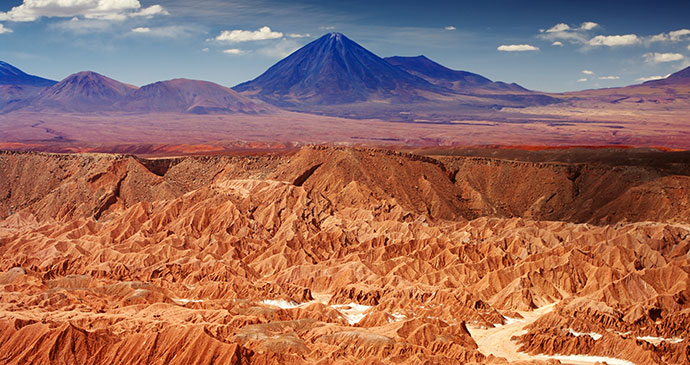
A few transversal valleys carry snowmelt water from the Andes; these provided a toehold for early human habitation, in conjunction with the thriving marine life of the Humboldt Current. Inland from the desert is the precordillera or the foothills of the Andes, at 1,200–3,500m, leading to the altiplano or highlands, a plateau created from the ash thrown out by the spectacular volcanoes that rise to 6,330m. It’s high and cold, but marshy grasslands are home to camelids and a wide variety of birds, notably flamingos.
Bardenas Reales, Spain
Navarre’s film-star semi-desert, the Bardenas Reales, was first designated a natural park in 1999 and then as a biosphere reserve a year later. The wonders of the landscape are self-evident once you are inside the park, but other peculiarities are not so obvious.
First of all, the area is owned by 20 nearby communities, as well as by the nearby Monasterio de la Oliva, and the distant valleys of Roncal and Salazar in the Pyrenees. Rights of perpetual pasturage were granted by the king in centuries long gone, giving the territory its Real (Royal) title.
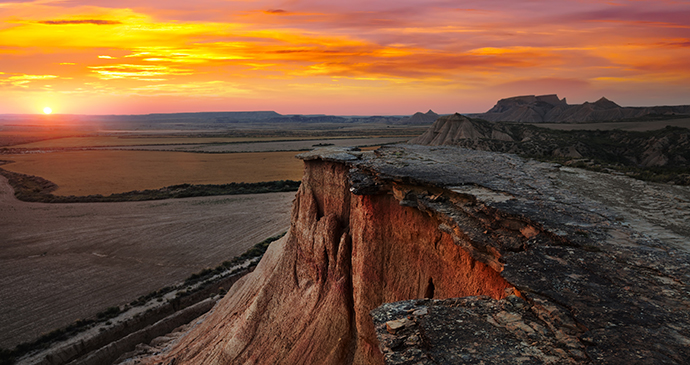
Every year from 18 September, shepherds bring their flocks of sheep down the cañadas reales (drovers’ routes) from those valleys to avoid the Pyrenean winter, and stay until April or May. Some small waterholes have been created to supply the flocks, while the shepherds live in the nearby towns.
Secondly, this heavily protected area has a military base and firing range in its very middle. Every day in clear weather, Spanish air force jets arrive from Zaragoza, screaming down from above, dropping dummy bombs and occasionally live ammunition on to targets said by locals to be neatly arranged to represent Middle Eastern airbases. Needless to say, many locals want the base removed from this beautiful, rugged location, but the government pays the communities richly for its presence and there seems little chance of the situation altering anytime soon.
Danakil Desert, Ethiopia
Straddling the Eritrean border to the east of the Tigrayan highlands, the Danakil, or Dallol, is an area of true desert that extends across the most northerly and volcanically active portion of the Afar Depression. It ranks among the lowest-lying places anywhere in the planet, dropping to 116m below sea level, while temperatures on the shadeless plains frequently soar above 50°C, and are exacerbated by a fierce gale known as the Gara (Fire Wind).
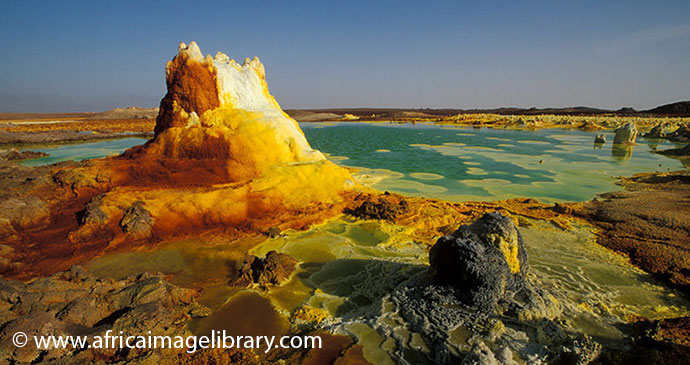
This climatic inhospitality is mirrored by the reputation of the region’s nomadic Afar inhabitants, who traditionally eked out an income as salt miners and traders, transporting their wares by camelback to the Tigrayan highlands. As recently as the 1930s, the Afar of the Danakil were known to greet male strangers by lopping off their testicles. Today, while scrotal intactness is no longer a cause for concern, the desert-hardened Afar are unmatched when it comes to making life difficult for travellers and guides who don’t bow to their frequent and inventive demands for fees and tips. This, in short, is a challenging travel destination.
Gobi, Mongolia
Sand and sand dunes occupy about 10% of Mongolia’s territory, but much of the Gobi is a plain of scrub and gravel rather than sand, with scattered salt and soda lakes. Summer flash-floods spread widely across the impermeable surface to create raging torrents which cut channels 1m or more deep as the water drains off to find its level and then soaks away. These dried-up channels represent a hazard to cross-country vehicles.
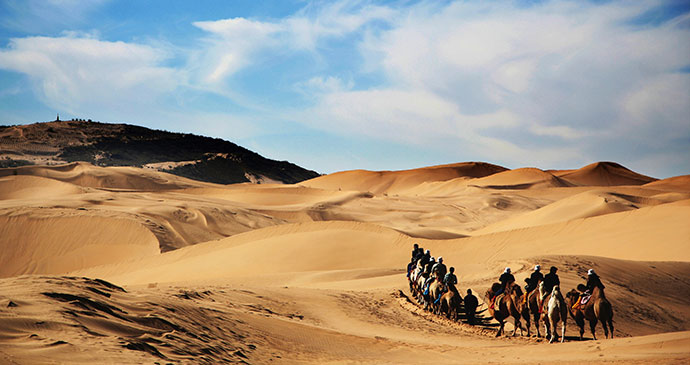
The Trans-Altai Gobi, between the Gobi-Altai and the border with Chinese Xinjiang, is the last-known habitat of the takhi, the Mongolian wild horse or Przewalski horse, which was returned from captive-bred foreign stock (in international zoos, reserves and private collections) after the pure native variety became extinct. Also in this region are khulan, or wild asses, and saiga antelope – found only in southwest Mongolia.
Kyzylkum Desert, Uzbekistan
Named after its red sand, Kyzylkum is the 15th-largest desert in the world and spreads across northern Uzbekistan and up into neighbouring Kazakhstan. Between March and May, and September and October, you can trek a circuit on foot or by camel from the village of Yangi Kazgan, just north of Lake Aidarkul, and camel treks of two days or more include accommodation in the camel-hair yurts belonging to local Kazakh nomads.
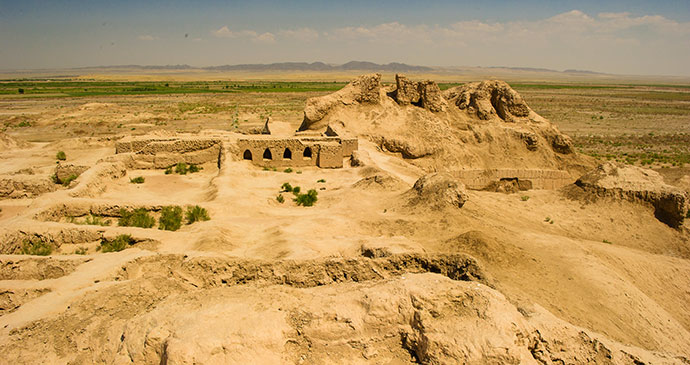
Expect to enjoy the best of local hospitality, from homemade bread dipped in still-steaming camel milk, to hunks of camel meat. Beds are made up on the floor from piles of rainbow-coloured blankets and rugs, and you’ll often sleep cheek-by-jowl with other guests. You’ll never forget the experience, and certainly won’t get cold at night.
Lompoul, Senegal
Like a little chunk of Sahara that got separated from its mother, the Lompoul Desert is an incongruous 20km2 of dunes hidden away several kilometres inland from the ocean, but, from the moment you arrive here, it’s as if you’ve been magically transported miles north (by flying carpet, perhaps?) to the enormous sand seas, or ergs, of Morocco and Mauritania.
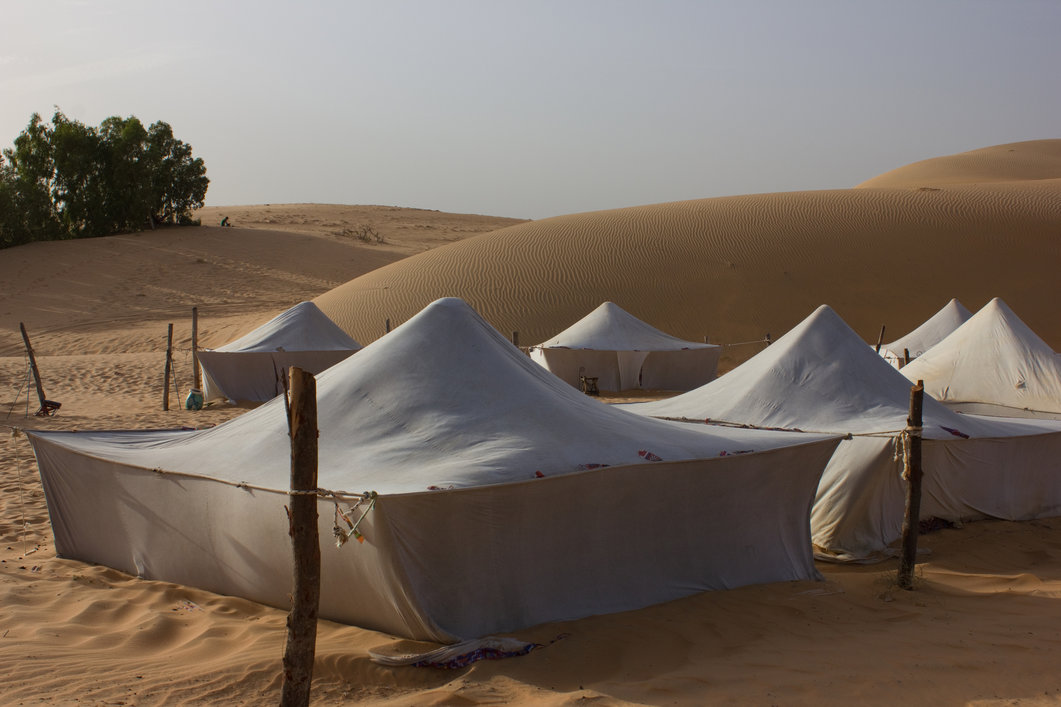
And while much of northern Senegal sizzles and bakes as you’d expect of any good desert, this is the only place in the country (and for hundreds of miles beyond) that you’ll find true sand dunes, towering above the low khaïma tents, the traditional Mauritanian domicile of choice, set up beneath them. Stoic dromedaries ponder the sands with nonchalance and ferry visitors up and down the windswept, mountainous dunes at the age-old, unhurried pace of the desert. Lompoul is truly one of Senegal’s greatest escapes, and if you’re going to splurge somewhere this would be an excellent place to do it.
Negev Desert, Israel
In his book The Innocents Abroad, Mark Twain described the Negev Desert as ‘a desolation that not even imagination can grace with the pomp of life and action’, an observation that 150 years on remains rather apt.
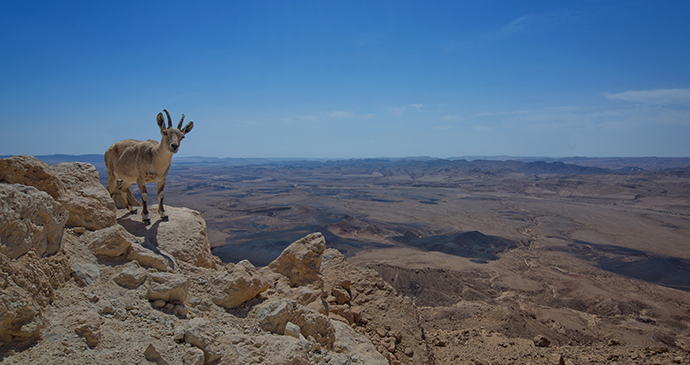
The vast Negev Desert occupies half of Israel, and is characterised by the geological phenomenon that is the Ramon Crater, as well as its remarkable landscapes, waterfalls, caves, archaeological sites and rich history. The path of the ancient Nabatean Spice Route once wove its way through the peaks and troughs of the desert mountains, prosperous cities appearing along the way; Abraham built his well in the present-day city of Beersheba; and Israel’s first prime minister settled and died in the remote Kibbutz Sde Boker.
Sossusvlei, Namibia
When people speak of visiting the Namib Desert, this is often the area they mean. The classic desert scenery around Sesriem and Sossusvlei is the stuff that postcards are made of – enormous apricot dunes with gracefully curving ridges, invariably pictured in the sharp light of dawn with a photogenic oryx or feathery acacia adjacent.
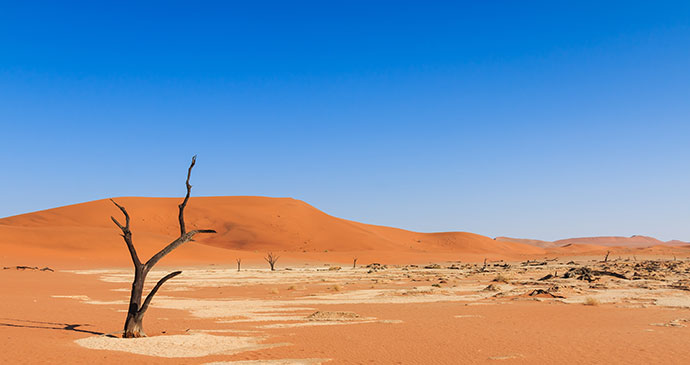
Sesriem and Sossusvlei lie on the Tsauchab River, one of two large rivers (the other being the Tsondab, further north) that flow westward into the great dune field of the central Namib, but never reach the ocean. Both end by forming flat white pans dotted with green trees, surrounded by spectacular dunes – islands of life within a sea of sand.
Wihibah Sands, Oman
The Wihibah (also Wahiba) is a true sea of sand, measuring 180km from north to south, 80km from east to west, and with dunes 100–150m high. The northern dunes are primarily quartz in origin, with a multi-hued golden sheen from surface oxidisation, while the southern dunes are carbonate sand, pale in colour, and formed by the prevailing south–north wind direction. In the north the wind has created vast linear dunes whose length is in excess of 50km.
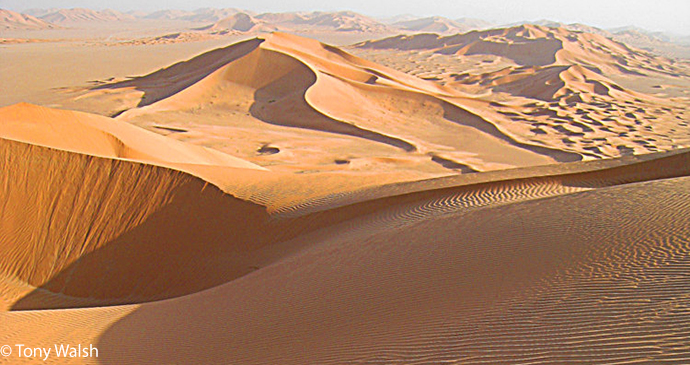
The ridges of the dunes have created valleys that now contain most routes from the north to the Arabian Sea. In the winter months night-time drops in temperature may cause mist whose dew can sustain both animals and plants. Below the loose dune surface in the south is an older fossil desert made up of Aeolian dunes that become evident along the southern coast. Bedouin camps can be found along trails and tracks in the Wihibah, though today most people are permanently settled in one of the villages of Bidiyyah.